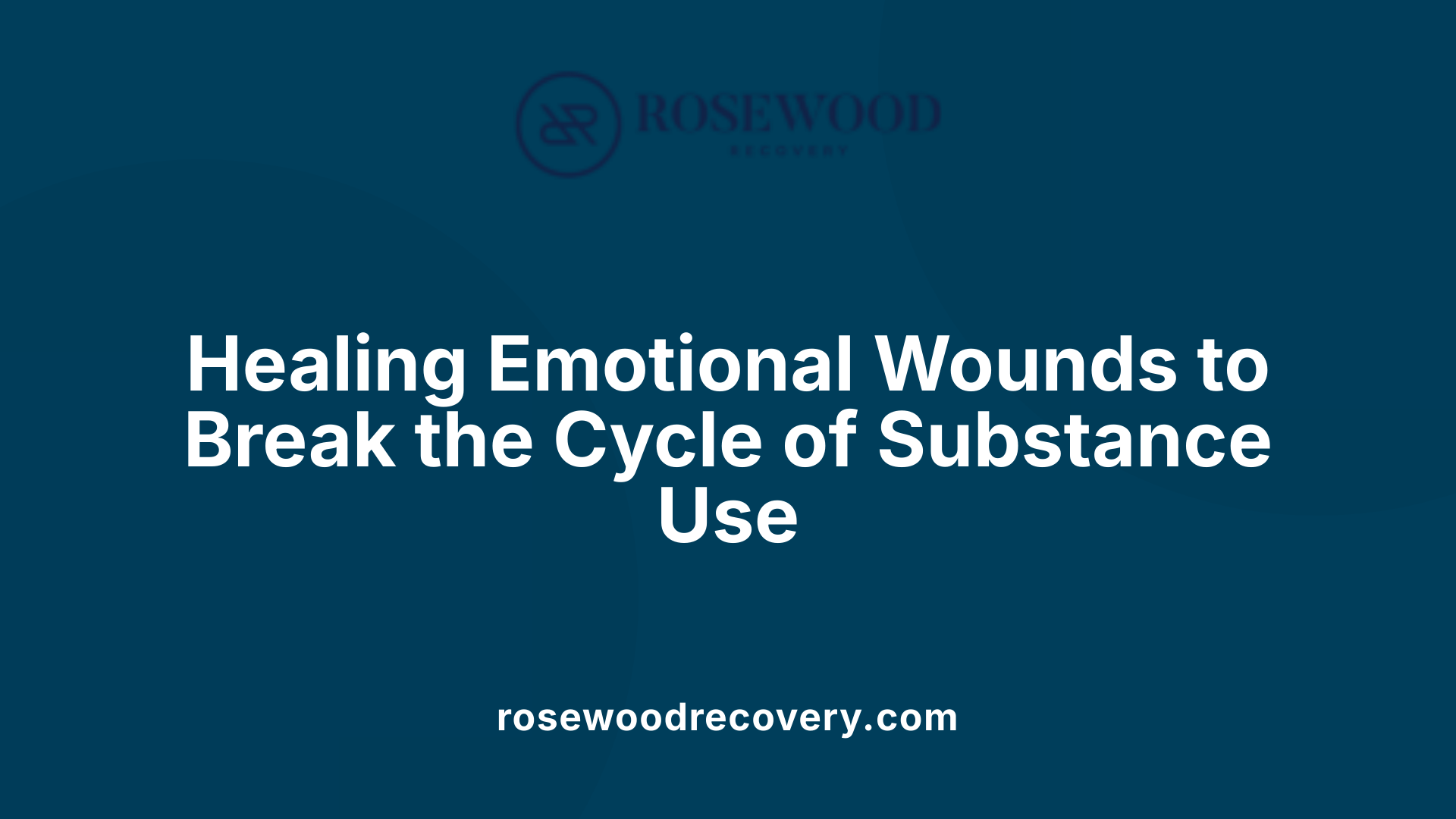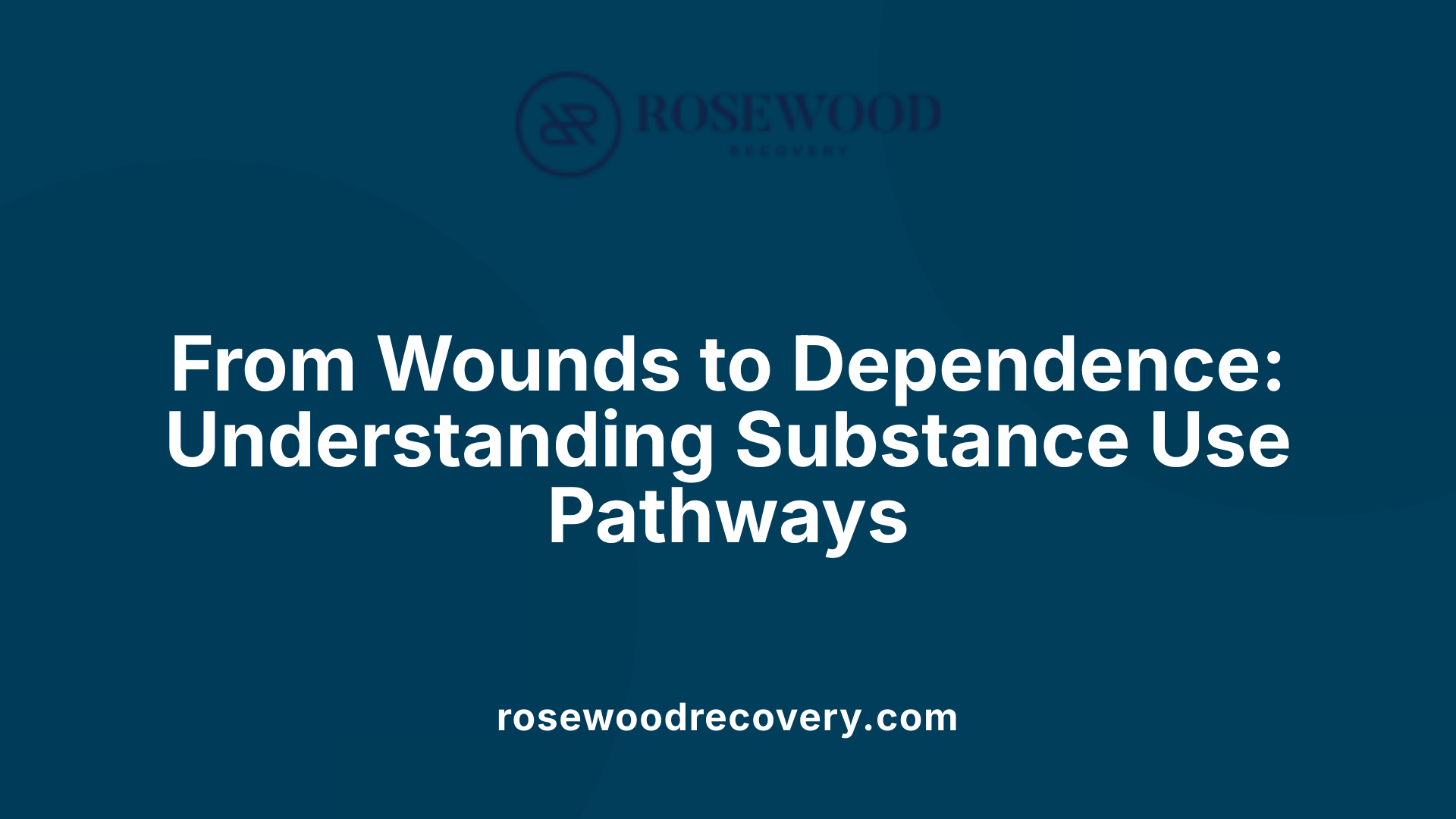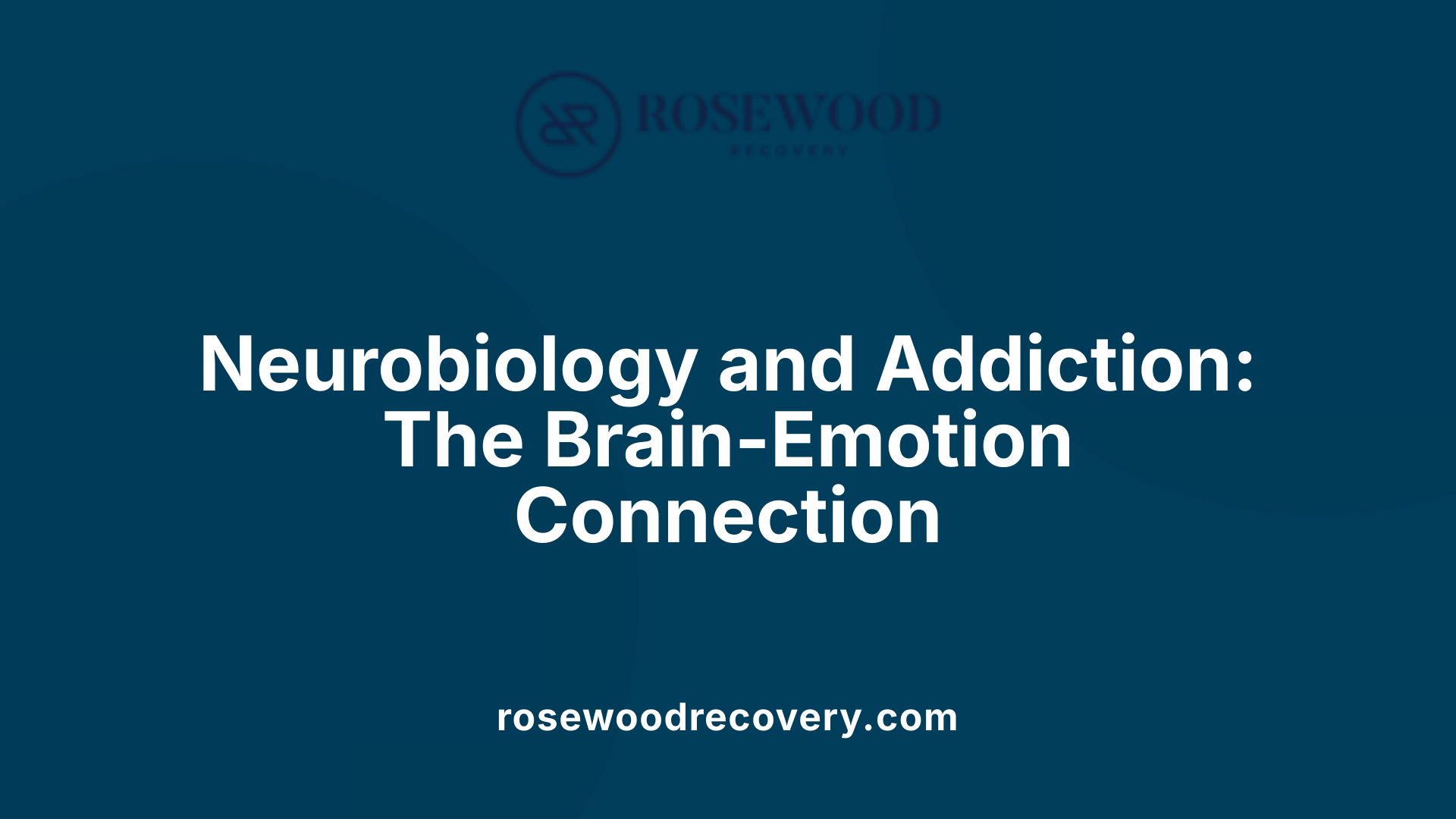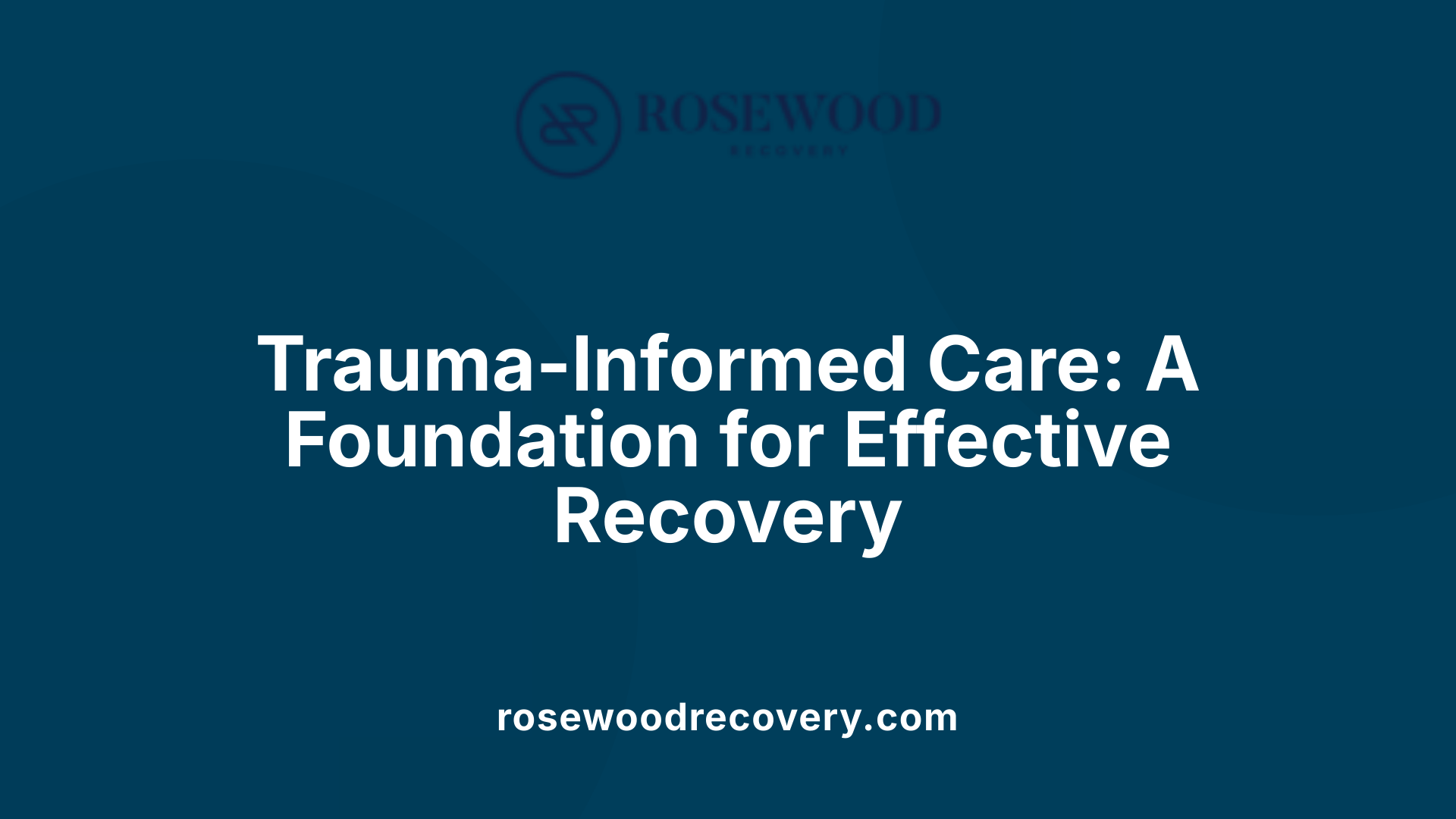How emotional wounds contribute to substance use patterns
Unveiling the Roots: The Impact of Emotional Wounds on Substance Use Patterns

Understanding the Deep Links Between Emotional Trauma and Addiction
Emotional wounds, particularly those stemming from unresolved trauma and adverse childhood experiences, play a crucial role in shaping patterns of substance use. This article explores the complex pathways through which emotional pain influences addiction behaviors, highlighting neurobiological mechanisms, psychological processes, and the importance of trauma-informed care in treatment and prevention.
The Connection Between Emotional Wounds and Substance Use

How do emotional wounds contribute to patterns of substance use?
Emotional wounds, such as unresolved trauma, adverse childhood experiences (ACEs), or emotional abuse, play a significant role in shaping substance use behaviors. When individuals experience traumatic events or chronic emotional pain, their ability to manage distress and regulate emotions can become impaired. To cope with persistent feelings of anxiety, depression, or trauma-related distress, many turn to substances like alcohol, opioids, or cannabis as a form of self-medication.
This pattern of using substances to numb emotional pain often leads to a cycle where substance use becomes institutionalized, reinforcing dependency. Over time, repeated use causes changes in the brain, particularly in areas responsible for reward, stress regulation, and impulse control. These neurobiological alterations make it harder for individuals to resist cravings, increase vulnerability to relapse, and sustain addiction.
Early traumatic experiences, especially during childhood, can create maladaptive emotional patterns and insecure attachment styles. These developmental factors further escalate the risk of developing substance use disorders (SUDs) in adulthood. Addressing underlying emotional wounds through trauma-informed care, therapeutic interventions, and mental health support is essential for breaking the cycle of addiction and fostering lasting recovery.
Neurobiological changes caused by trauma and substance misuse
Trauma and prolonged substance use induce significant neurofunctional changes. They alter brain circuits involved in the reward pathway, primarily affecting neurotransmitters like dopamine. This dysregulation heightens cravings and reinforces substance-seeking behaviors. Additionally, trauma impacts areas such as the ventromedial prefrontal cortex (VmPFC), crucial for stress and pain regulation.
Dysfunction in the VmPFC hampers an individual’s ability to manage stress and emotional pain effectively, increasing susceptibility to chronic pain and emotional distress. Substance misuse further exacerbates these neurobiological disruptions, creating a cycle where emotional wounds and brain changes perpetuate each other.
Research highlights that addressing both trauma and its neural consequences is vital for effective treatment. Trauma-focused therapies like EMDR and cognitive-behavioral therapy (CBT) help repair emotional wounds, while medication and support systems can restore brain function, assisting individuals in overcoming the intertwined challenges of trauma and addiction.
| Aspect | Effect | Impact on Treatment |
|---|---|---|
| Emotional wounds | Impairment in emotional regulation | Necessity for trauma-informed care |
| Brain changes | Altered reward and stress circuits | Use of therapy and medication |
| Developmental factors | Maladaptive attachment patterns | Focus on early intervention |
Understanding these complex connections underscores the importance of a comprehensive approach that considers emotional history, neurobiology, and behavioral health in the recovery process.
The Role of Adverse Childhood Experiences in Addiction
Impact of ACEs on later substance use behaviors
Traumatic experiences during childhood, known as adverse childhood experiences (ACEs), have a profound influence on the development of substance use behaviors later in life. Research demonstrates that individuals who experience ACEs are significantly more likely to engage in substance misuse. These early traumatic events, which include types of physical, emotional, and sexual abuse, as well as household dysfunctions like parental substance use or domestic violence, create a heightened vulnerability to addiction.
Children exposed to ACEs often develop emotional distress and difficulties with regulation, which they may attempt to soothe through drug and alcohol use. Such behavior can serve as a form of self-medication, providing temporary relief but leading to a cycle of dependence. The trajectory from childhood trauma to substance use is influenced by multiple factors such as gender, race, and socioeconomic background, which can modify the level of risk.
The dose-response relationship between ACEs and substance misuse
A key finding in trauma research is the dose-response relationship between ACEs and substance misuse, meaning that the more ACEs a person experiences, the higher their likelihood of engaging in substance use and developing related disorders. For example, adults with four or more ACEs are 7 to 10 times more likely to misuse illicit substances than those with fewer or no ACEs.
Higher ACE scores are associated with increased use of cigarettes, marijuana, alcohol, and other drugs across adolescence into early adulthood. Studies show that each additional ACE correlates with a greater tendency for substance use escalation over time, indicating a persistent influence of early trauma throughout the lifespan.
| ACE Score | Increased Risk of Substance Use | Types of Substances Affected | Additional Notes |
|---|---|---|---|
| 1-2 | Moderate increase | Alcohol, cigarettes | Initial risk elevation |
| 3-4 | Significant increase | Marijuana, other drugs | Strong predictor |
| 5+ | Very high increase | Multiple substances | Higher prevalence in vulnerable groups |
Addressing ACEs early and providing trauma-informed care can significantly reduce the risk of subsequent substance misuse, emphasizing the importance of preventive strategies and resilience-building in vulnerable populations.
Emotional and Psychological Factors Driving Substance Use
How do emotional issues such as stress, anxiety, shame, numbness, and depression influence substance use patterns?
Emotional struggles like stress, anxiety, shame, numbness, and depression often lead individuals to seek temporary relief through substance use. When people experience intense emotional pain or discomfort, drugs and alcohol can provide a short-term escape by dulling emotional sensations, which reinforces their use.
Stress and anxiety activate brain pathways associated with reward and relief, making substances more gratifying and increasing the likelihood of repeated use. Similarly, feelings of shame and guilt can lead to self-medication, as individuals try to numb negative self-perceptions.
Numbness, or emotional detachment, reduces the person's ability to feel joy or connection, pushing them to turn to substances that can restore feelings of normalcy or euphoria. Depression, characterized by hopelessness and loss of motivation, further drives individuals toward substances that temporarily elevate mood, creating a cycle of dependence.
This pattern of using substances to cope with emotional distress is fueled by changes in brain chemistry, specifically overactivation of the brain's reward system. The reinforcing effects make it hard to stop, as emotional relief becomes a primary motivator for ongoing use.
Bidirectional relationships between emotional issues and substance misuse
The connection between emotional health and substance use is bidirectional. Not only do emotional issues increase the risk of developing a substance use disorder, but prolonged substance use can also worsen emotional symptoms.
For example, chronic drug and alcohol use can lead to cognitive impairment, emotional numbness, and mood disorders like depression and anxiety. This creates a vicious cycle where emotional distress leads to substance use, which then exacerbates emotional and mental health problems.
Moreover, unresolved trauma and emotional wounds heighten vulnerability to addiction. Traumatic stress, particularly from early life experiences, can cause lasting neurobiological changes, especially in brain regions involved in emotion regulation such as the ventromedial prefrontal cortex. These changes impair the individual's capacity to manage stress and emotional pain, further increasing reliance on substances.
Effective treatment therefore requires addressing both the emotional issues and substance use simultaneously. Incorporating therapeutic approaches like cognitive-behavioral therapy (CBT), trauma-focused therapy, and emotional regulation skills can help break this cycle, promoting healthier coping mechanisms and supporting sustained recovery.
| Emotional Factors | Impact on Substance Use | Underlying Brain Changes |
|---|---|---|
| Stress & Anxiety | Drive reliance on substances to find relief | Dysregulation in stress and reward circuits |
| Shame & Guilt | Lead to self-medication | Altered self-perception and emotional processing |
| Numbness | Reduce emotional pain temporarily | Impaired emotion regulation areas |
| Depression | Seek mood-elevating substances | Changes in serotonin and dopamine pathways |
Psychological Mechanisms Connecting Trauma and Addiction

What are the psychological mechanisms linking unresolved emotional wounds and substance abuse?
Unresolved emotional wounds, especially from traumatic experiences, can deeply affect individuals' mental health and emotional stability. These wounds often manifest as negative core beliefs about oneself, the world, or others, which foster feelings of shame, guilt, and unworthiness.
Trauma can lead to emotional dysregulation, making it difficult for individuals to manage feelings like anger, sadness, or anxiety. To cope with this overwhelming emotional pain, many turn to substances such as alcohol, drugs, or prescription medications. These substances temporarily numb pain or provide a sense of relief, creating a cycle of self-medication.
Trauma influences brain function by altering neural circuits involved in reward processing, stress response, and decision-making. These neurofunctional changes increase the vulnerability to substance misuse. For instance, disruptions in the ventromedial prefrontal cortex (VmPFC) impair stress and emotional regulation.
Mental health conditions like PTSD, depression, or anxiety often coexist with substance use. These conditions not only reinforce the cycle of trauma and addiction but also complicate treatment. The bidirectional relationship means that unresolved emotional wounds can exacerbate substance abuse, and vice versa.
Addressing these psychological mechanisms requires trauma-informed interventions. Therapies like trauma-focused cognitive-behavioral therapy (TF-CBT) aim to reframe negative beliefs, improve emotional regulation skills, and repair neurofunctional deficits. Overall, understanding and treating the underlying emotional wounds is essential for breaking the cycle of trauma-related addiction.
Interpersonal Trauma, Attachment, and Substance Use
How do interpersonal trauma and attachment issues affect substance use behaviors?
Interpersonal trauma, especially during childhood or within caregiving relationships, can deeply alter an individual's emotional regulation and sense of self. Traumatic experiences such as abuse or neglect interfere with developing secure attachment to caregivers, leading to insecure attachment patterns that persist into adulthood.
These early disruptions can result in heightened emotional distress, feelings of shame, and a reduced ability to cope with stress healthily. As a result, many individuals turn to substances as a way of self-medicating—seeking relief from painful memories, overwhelming emotions, or feelings of worthlessness.
Traumatic experiences can also impair how individuals perceive themselves and their relationships, increasing the likelihood of using drugs or alcohol to temporarily regain a sense of control or confidence. However, this often worsens core issues, impairs parental functioning in those with children, and supports the transmission of insecure attachment patterns across generations.
The cycle is complex: trauma influences attachment, which influences emotional and behavioral responses, often culminating in substance use as a maladaptive coping mechanism. Recognizing this interconnected pathway underscores the importance of trauma-informed care and attachment-focused interventions in preventing and treating substance use disorders.
More info
Search query: interpersonal trauma and attachment in addiction
| Aspect | Description | Impact on Substance Use |
|---|---|---|
| Childhood trauma and attachment | Disrupts emotional regulation and secure attachment formation | Elevates vulnerability to self-medication with substances |
| Emotional dysregulation | Leads to using substances to manage overwhelming emotions | Reinforces dependence and worsens trauma-related symptoms |
| Insecure attachment patterns | Increase difficulty in seeking support and regulation | Contribute to ongoing substance use and intergenerational cycles |
| Transmission across generations | Parental trauma and attachment affect children's development | Increases risk of trauma exposure, insecure attachment, and subsequent substance use |
Understanding how early trauma and attachment issues influence substance use emphasizes the need for integrated, trauma-sensitive treatment approaches that address underlying emotional wounds and relational patterns.
Pathways and Causes of Substance Use Disorders Linked to Emotional Wounds

What are the underlying pathways and causes of substance use disorders related to emotional wounds?
The development of substance use disorders (SUDs) tied to emotional wounds is primarily driven by maladaptive coping strategies. Many individuals turn to substances like alcohol, opioids, and marijuana as a way to manage ongoing emotional pain, unresolved trauma, and psychological stress. These substances temporarily numb feelings of distress but often lead to dependence and addiction.
Trauma, especially from childhood, increases vulnerability by disrupting normal brain development and functioning. Adverse childhood experiences (ACEs) such as abuse or neglect distort neural circuits involved in emotion regulation and stress response. This creates a cycle where emotional pain is self-medicated through substance use, reinforcing dependence.
Neurobiologically, repeated substance use causes changes in brain chemistry. Alterations in dopamine and other neurotransmitter pathways strengthen the rewarding effects of these drugs, making relapse more likely even after periods of abstinence.
Besides these neurobiological factors, environmental and social stressors further foster substance use behaviors. Conditions like ongoing trauma, socioeconomic hardships, or familial issues can exacerbate the pattern of using substances as a means of emotional escape.
Moreover, individuals with unresolved trauma and emotional wounds often experience altered brain function, especially in regions like the ventromedial prefrontal cortex (VmPFC), impairing their ability to regulate stress and emotions effectively. This dysfunction compels them toward substance use as a form of modulation.
The intertwined effects of trauma, neurobiological changes, and environmental factors create a cycle that sustains and exacerbates substance use disorders. Addressing these underlying emotional wounds through trauma-informed care and therapies targeting emotional regulation is essential for effective treatment and long-term recovery.
| Cause/Pathway | Description | Impact |
|---|---|---|
| Maladaptive coping strategies | Using substances to escape emotional pain and trauma | Reinforces dependence, perpetuates addiction |
| Neurobiological reinforcement | Brain changes due to repeated substance use affecting reward and stress systems | Creates cravings and compulsive use |
| Childhood trauma (ACEs) | Early adverse experiences disrupting emotional regulation | Increases vulnerability to SUDs |
| Environmental stressors | Ongoing social and psychological stress impacts coping ability | Promotes continued substance use as relief |
Understanding these pathways highlights the importance of addressing emotional wounds and trauma in treating substance use disorders. Therapy approaches like trauma-focused cognitive-behavioral therapy (TF-CBT) and other interventions are vital in breaking the cycle of reliance on substances for emotional escape.
The Role of Neurobiology in Substance Use and Emotional Regulation

Brain circuits involved in stress, reward, and impulse control
The brain's complex network of circuits plays a significant role in controlling stress responses, rewards, and impulses. Central to this system are areas like the ventromedial prefrontal cortex (VmPFC), which helps regulate emotional reactions and stress. The reward system, mainly involving the dopamine pathways, governs how pleasurable stimuli—such as drugs—produce feelings of euphoria.
When functioning properly, these circuits allow individuals to manage stress and resist harmful impulses. However, disruptions within these pathways can lead to difficulties in emotional regulation and impulsive behaviors, including substance use. Impaired circuits may cause individuals to seek substances as a way to manage unresolved emotional pain or stress.
Effects of chronic stress on brain function
Chronic stress exerts profound effects on brain functioning, especially in areas like the VmPFC. Persistent stress can lead to neurofunctional changes, weakening the brain's ability to regulate both emotional responses and pain. This dysfunction makes individuals more vulnerable to developing chronic pain and substance use disorders.
Research shows that chronic stress may induce hyperactivity in stress response circuits and diminish the capacity of control centers like the VmPFC. As a result, emotional distress, anxiety, and pain become harder to manage, often leading to reliance on substances as a form of relief.
The overlap in neural pathways involved in stress regulation and reward underscores why chronic stress can escalate the risk of substance misuse. When these circuits are compromised, the cycle of stress, emotional dysregulation, and addiction becomes more entrenched.
| Brain Region | Function | Impact of Chronic Stress | Relevance to Substance Use |
|---|---|---|---|
| Ventromedial prefrontal cortex (VmPFC) | Emotional regulation, decision-making | Dysfunction leads to poor stress management | Increased risk of addiction and pain sensitization |
| Dopamine pathways | Reward processing | Altered reward response | Elevated cravings and compulsive drug seeking |
| Stress response circuits | Fight or flight responses | Hyperactivity resulting in hyperalgesia | Heightened vulnerability to stress-induced relapse |
Understanding these neural mechanisms highlights the importance of targeting brain health in treating chronic pain, stress, and addiction, aiming to restore proper circuit functioning and emotional regulation.
Importance of Trauma-Informed Care in Prevention and Treatment

How do trauma-informed approaches and therapies help in addiction treatment?
Trauma-informed care acknowledges the deep impact of past traumatic experiences on individuals struggling with addiction. Approaches such as trauma-focused cognitive behavioral therapy (TF-CBT) and Eye Movement Desensitization and Reprocessing (EMDR) are tailored to address unresolved trauma, helping patients process painful memories safely.
These therapies target the roots of emotional distress, which often contribute to substance use as a coping mechanism. By focusing on healing traumatic wounds, trauma-informed care reduces the likelihood of relapse and helps individuals build healthier emotional regulation skills.
How does addressing emotional wounds reduce the risk of relapse?
Unresolved trauma creates a vulnerable emotional state that can trigger drug cravings and lead to relapse. When trauma is overlooked, individuals may turn back to substances to numb pain or soothe distress. Addressing these underlying issues through trauma-sensitive treatments diminishes this risk.
Research indicates that integrating trauma work into addiction recovery improves long-term outcomes, fostering resilience and emotional stability. It shifts the focus from simply stopping drug use to restoring psychological health, reducing the cycle of emotional pain and substance dependence.
Additional insights on trauma-informed care
Trauma-informed care also emphasizes creating a safe, supportive environment that fosters trust and empowerment. This approach recognizes how early adverse experiences—such as ACEs—can lead to insecure attachments and emotional dysregulation that perpetuate substance use.
By understanding the linkage between trauma and addiction, treatment programs become more effective. They promote healing not just from substance dependency, but from the emotional wounds that fuel it.
| Aspect of Care | Focus Areas | Benefits |
|---|---|---|
| Trauma-Focused Therapies | Address past trauma, emotional processing | Decreases relapse, improves emotional regulation |
| Supportive Environment | Safety, trust, empowerment | Encourages openness, engagement in treatment |
| Prevention Strategies | Early trauma screening, education | Reduces initial substance use risks |
Trauma-informed strategies are essential in preventing and treating addiction, transforming recovery into a comprehensive healing process that confronts both behavioral and emotional roots.
The Cycle of Trauma and Substance Use in Generational Contexts
How is trauma and addiction transmitted across generations?
Trauma and substance use issues are often passed from one generation to the next. Children whose mothers or caregivers have substance use disorders (SUDs), especially when combined with histories of interpersonal trauma, are at higher risk of experiencing trauma themselves. These early experiences, such as physical, emotional, or sexual abuse, can result in insecure attachments and impaired emotional regulation.
Trauma affects brain chemistry and attachment styles, often leading to emotional pain that individuals seek to numb through substances. This cycle begins with early interpersonal trauma, which increases vulnerability to addiction later in life.
Research shows that adverse childhood experiences (ACEs), including neglect and household dysfunction, have a dose-response relationship with increased substance use. Higher ACE scores correlate with earlier onset and more severe substance problems, perpetuating a cycle of trauma and addiction across generations.
How does trauma impact maternal mental health and parenting?
Trauma experienced during childhood or adulthood can hinder a mother's emotional stability and parenting abilities. Mothers with unresolved trauma may use substances as a form of self-medication, temporarily alleviating emotional distress. This behavior can impair their capacity to provide consistent and sensitive care, affecting their child's emotional development.
Disrupted attachment and trauma transmission can also affect maternal functioning, leading to insecure attachment patterns in children. These children are more susceptible to emotional, behavioral, and developmental issues, which can perpetuate a cycle of trauma and substance use.
Trauma-informed care that addresses these underlying wounds is essential. Approaches like therapy for trauma, family support, and emotional regulation strategies can help break this intergenerational cycle.
| Aspect | Impact | Further Details |
|---|---|---|
| Intergenerational transmission | Higher risk of trauma and addiction | Via insecure attachments and emotional dysregulation |
| Maternal mental health | Increased vulnerability to substance use | Affects parenting abilities and child development |
| Prevention and intervention | Trauma-informed care | Critical for disrupting the cycle and promoting recovery |
Understanding these interconnected pathways emphasizes the importance of addressing trauma early on—to heal emotional wounds and prevent the continuation of trauma and addiction in future generations.
Breaking the Cycle: Towards Healing and Recovery
Understanding how emotional wounds contribute to patterns of substance use highlights the importance of addressing underlying trauma in prevention and treatment. Trauma-informed care, early intervention, and building resilience are critical in disrupting the cycle of emotional pain and addiction, paving the way for genuine recovery and healthier futures.
References
- Chronic pain, chronic stress and substance use
- Substance Use Disorder (SUD): Symptoms & Treatment
- The Link Between Unresolved Trauma and Addiction
- The intersection of childhood trauma and addiction
- Drug addiction (substance use disorder) - Symptoms and ...
- Five Psychological Effects of Drug Addiction
- Mothering, Substance Use Disorders and Intergenerational ...
- What Is a Substance Use Disorder?
More Articles
Recovery Begins Here
Click below to get in touch and schedule a consult call with our team to begin your journey towards happiness and freedom.
Rosewood Recovery does not discrimate against any person because of the race, color, religious creed, ancestry, age, sex, sexual orientation, gender identity, national origin, handicap or disability or the use of a guide or support animal because of the blindness, deafness or physical handicap.





